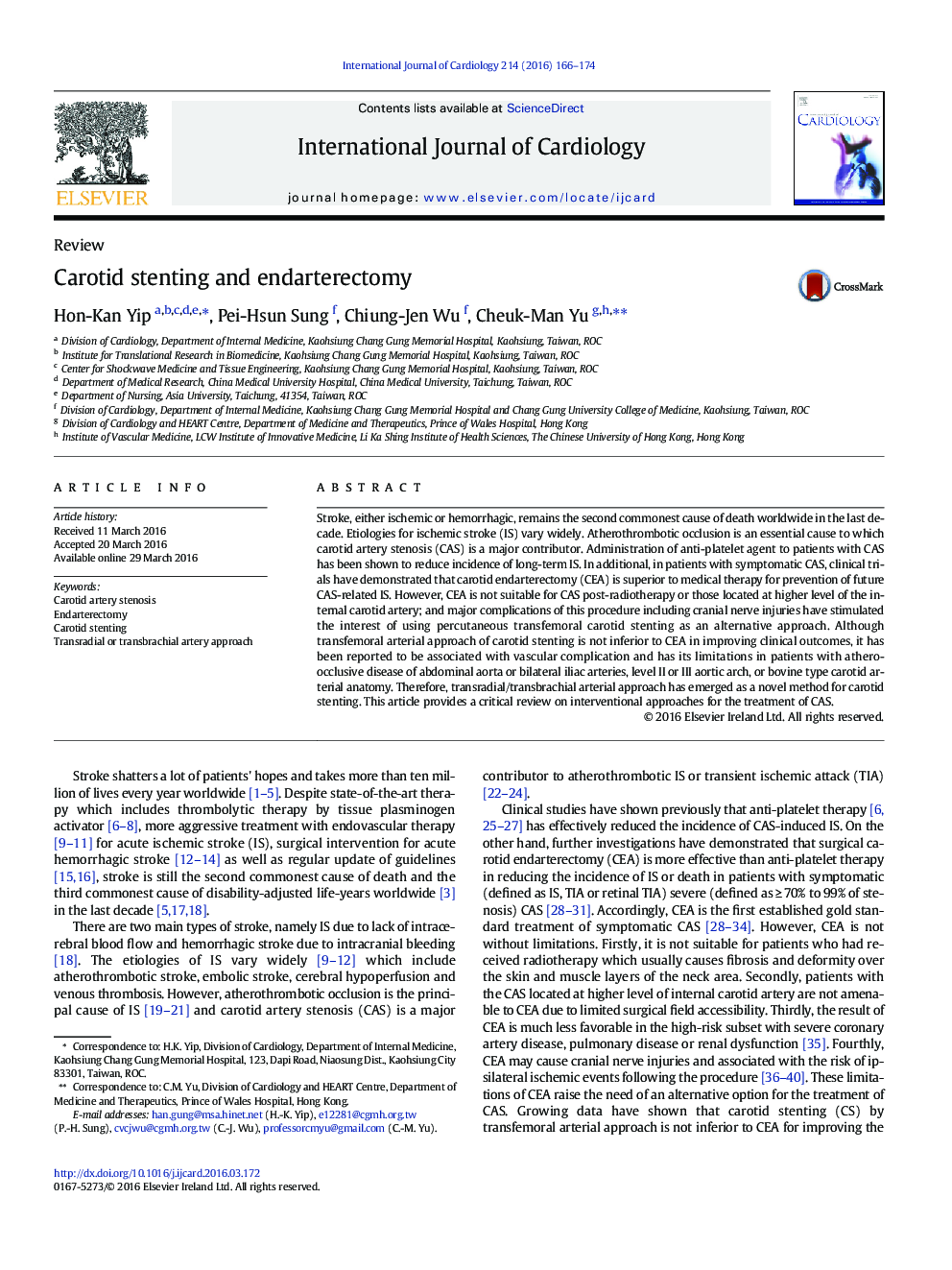| Article ID | Journal | Published Year | Pages | File Type |
|---|---|---|---|---|
| 5964607 | International Journal of Cardiology | 2016 | 9 Pages |
â¢Current interventional treatment for carotid artery stenosis (CAS)â¢Carotid endarterectomy (CEA) - safety and efficacyâ¢Transfemoral arterial approach for carotid stenting - an alternative to CEAâ¢Transradial arterial approach for carotid intervention - safety and efficacyâ¢Our experience: introduction of a novel method for carotid stenting
Stroke, either ischemic or hemorrhagic, remains the second commonest cause of death worldwide in the last decade. Etiologies for ischemic stroke (IS) vary widely. Atherothrombotic occlusion is an essential cause to which carotid artery stenosis (CAS) is a major contributor. Administration of anti-platelet agent to patients with CAS has been shown to reduce incidence of long-term IS. In additional, in patients with symptomatic CAS, clinical trials have demonstrated that carotid endarterectomy (CEA) is superior to medical therapy for prevention of future CAS-related IS. However, CEA is not suitable for CAS post-radiotherapy or those located at higher level of the internal carotid artery; and major complications of this procedure including cranial nerve injuries have stimulated the interest of using percutaneous transfemoral carotid stenting as an alternative approach. Although transfemoral arterial approach of carotid stenting is not inferior to CEA in improving clinical outcomes, it has been reported to be associated with vascular complication and has its limitations in patients with athero-occlusive disease of abdominal aorta or bilateral iliac arteries, level II or III aortic arch, or bovine type carotid arterial anatomy. Therefore, transradial/transbrachial arterial approach has emerged as a novel method for carotid stenting. This article provides a critical review on interventional approaches for the treatment of CAS.
